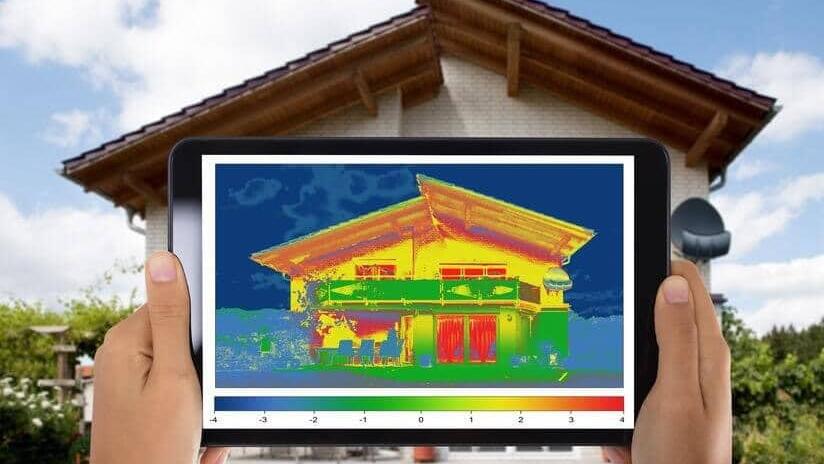 Policy & Regulation
Policy & RegulationDefining Carbon Neutrality: Not as Simple as It Might Seem
Summary
Carbon-dioxide (CO2) accumulates in the atmosphere through natural and anthropogenic processes. In the atmosphere, CO2 absorbs heat and thus causes the atmosphere to heat up. Is simply moving towards CO2-neutrality sufficient for attaining the goals as agreed on in the Paris Climate Agreement? And, what is the actual difference between climate neutrality and environmental neutrality? If not properly defined, misconceptions will inherently lead to inefficient approaches and disputes during implementation. The challenge in this in particular is that usually - at least it should be like this - decision makers believe that the context is clear. The commonly used response to the question ‘do you know what I mean: ‘yes I understand emulates a perceived common understanding of the matter in question’
This calls for ensuring mutual understanding on targets and definitions rather than well intended assumptions (i.e. ‘let us do something good for the environment or in a personal context’.
Open full article
Defining Carbon Neutrality: Not as Simple as It Might Seem
How to understand the terms ‘decarbonization’ and ‘carbon neutrality’? It is not about removing carbon itself – it is the combination of carbon and oxygen (carbon-dioxide) which yields harmful consequences for the global climate. Carbon-dioxide (CO2) accumulates in the atmosphere through natural and anthropogenic processes. In the atmosphere, CO2 absorbs heat and thus causes the atmosphere to heat up.
There are, CO2 aside, other substances which have a similar effect on the atmosphere, hence they are also regarded as advancing global warming[1], i.e. greenhouse gases or CO2 -equivalents.
Does carbon neutrality include these emissions, as well? What does carbon neutrality mean? Do we aim for CO2-neutrality? Is simply moving towards CO2-neutrality sufficient for attaining the goals as agreed on in the Paris Climate Agreement? Or does this require including CO2-equivalents? Does a full removal of greenhouse gases equal climate neutrality? And, what is the actual difference between climate neutrality and environmental neutrality?
Moreover, is ‚neutrality‘, defined as absolute neutrality (no emissions remaining), or is ‘net neutrality’ the goal, defined as neutrality after summing up all positively and negatively contributing factors (remaining emissions are cancelled out through compensatory measures, i.e. planting trees or purchase of emission certificates)?
Conceptualizing this is essential in order to set climate goals and implement respective policies. If not properly defined, misconceptions will inherently lead to inefficient approaches and disputes during implementation. With regard to this, capabilities and characteristics of each actor – and especially on a macro level societal, geopolitical and strategical considerations of nation-states – need to be included before setting terms and recommendations.
Actions attaining to different levels of neutrality:
Carbon Neutrality
- reducing CO2 emissions
- CO2compensation measures
Climate Neutrality
- reduction & compensation of CO2 and other Greenhouse gases (GHG[2]) with Global-warming potential (GWP[3][4]): CO2-equivalents[5]
- non-fluorinated: methane (CH4), nitrous oxide (N2O)
- fluorinated: hydrofluorocarbons (HFCs), perfluorocarbons (PFCs), sulphur hexafluoride (SF6), nitrogen trifluoride (NF3)
Environmental Neutrality
- avoidance & compensation of the above and any other means negatively impacting on the environment and health (i.e. pesticides, nitrogen oxides (NOx), soot, sulphur dioxide (SO2), particulates, etc.)
Necessity of establishing clarity on the target variable
How will decision makers be able to make good decisions if the issue to decide or act upon itself is not sufficiently clear: If for instance carbon neutrality is the proclaimed goal, is the intended goal neutralising all CO2-emissions or does the goal extend to CO2-equivalents as well, changing the actual goal to climate neutrality?
Clarity on the target variable is hence essential to make good decisions, the presence or absence of an CO2 ‘-eq.’-suffix changes the scope and corresponding strategy significantly. The challenge in this in particular is that usually – at least it should be like this – decision makers believe that the context is clear. Unambiguity therefore requires all stakeholders involved to be conscious of the clear definition(s) of the issue discussed, as well as having clear communication with one another.
Example:
The commonly used response to the question ‘do you know what I mean’ – ‘yes I understand’ emulates a perceived common understanding of the matter in question whilst in reality this means ‘I believe I know what you mean’ and can significantly harm, delay or prevent succeeding in achieving the (actually intended) goal set, respectively wasting time and resources.
This calls for ensuring mutual understanding on targets and definitions rather than well intended assumptions (i.e. ‘let us do something good for the environment’ or in a personal context ‘let us do something nice together’ –> likelihood that something ‘good’ or ‘nice’ is considered to be something very different is high): Hence, (order) clarification, where the involved parties define each element part of or excluded for target achievement is critical.
In context of this document: are CO2-equivalents considered (hence GHG with the corresponding target of ‘climate neutrality’) or not?
Target-setting aside, measuring progress on the set target must be against statistics of the very same definition consistently and in the same manner. If it is not an absolute goal such as net-zero or incorporates milestones, the definition of base-figures is essential (i.e. x % reduction by 2030. This frequently is based on 1990 figures, but it cannot be assumed unless clearly stated).
Less important in the long run, but critical during the starting period, is whether early milestones aim at, i.e., have strategies derived or contracts ready to be tendered or the strategies approved and the contracts awarded and signed. Here only absolute clarity will allow feasibility of schedules and successful progress.
In practice, however, climate and environmental neutrality are often mixed up, as are carbon and climate neutrality. This means a clear and mutual definition and understanding of the target (i.e. carbon, climate, or environmental neutrality), the goal aimed for and the associated timeframe, are vital for achieving meaningful and long-lasting climate goals.
Read more: Framing the ambition of carbon neutrality
Endnote:
[1] which itself leads to a chain reaction leading to a change in climate and thus the complex ecosystem itself
[2]https://ec.europa.eu/eurostat/statistics-explained/index.php?title=Glossary:Greenhouse_gas_(GHG)
[3]https://unfccc.int/process/transparency-and-reporting/greenhouse-gas-data/greenhouse-gas-data-unfccc/global-warming-potentials
[4]https://ec.europa.eu/eurostat/statistics-explained/index.php?title=Glossary:Global-warming_potential_(GWP)
[5]https://ec.europa.eu/eurostat/statistics-explained/index.php/Glossary:Carbon_dioxide_equivalent



